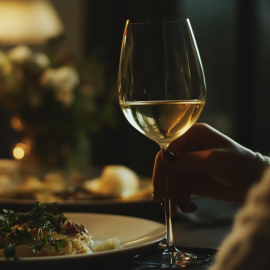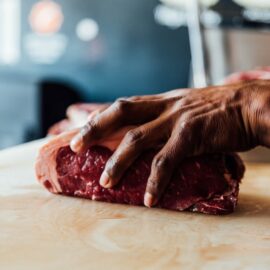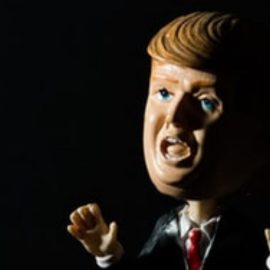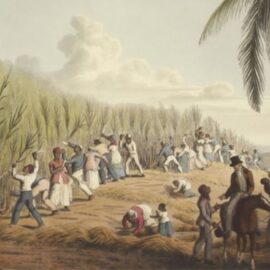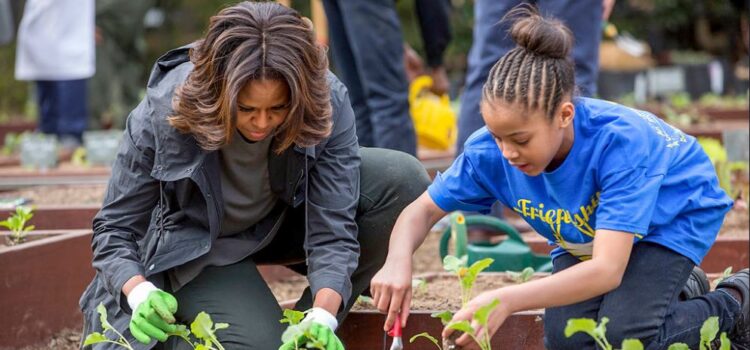
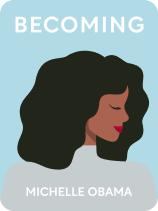
This article is an excerpt from the Shortform book guide to "Becoming" by Michelle Obama. Shortform has the world's best summaries and analyses of books you should be reading.
Like this article? Sign up for a free trial here .
What did Michelle Obama do in her first few months as First Lady? How did the media respond to her actions?
Michelle Obama always struggled with not feeling “good enough.” So when she became the first Black First Lady, she felt the pressure to make a good impression. Michelle created her own agenda which included nutrition awareness, support for military families, and encouraging young girls to pursue education.
Keep reading for more information on Michelle Obama’s first few months as First Lady.
Preparing to Be the First Black First Lady
In the 76 days between the election and the inauguration, Michelle started to plan what she would do as First Lady. After the hard knocks Michelle had to withstand during Barack’s presidential campaign, she had a fair idea of the scrutiny that awaited. As the first Black woman in American history to serve as First Lady, Michelle Obama would be “measured by a different yardstick.”
The job of a First Lady does not come with a job description or even with official responsibilities. And yet, the position wields tremendous power, and Michelle wanted to use that power to achieve positive changes. Since she was free to select her own agenda, she planned to oversee several initiatives that would offer better support for military families and teach America’s kids about food and nutrition.
A few weeks before the inauguration, President George W. Bush and First Lady Laura Bush invited Michelle and Barack to the White House. Bush, who had served as President for eight years, had pledged to ensure the smoothest Presidential transition in history. Laura gave Michelle a tour and offered encouraging words about the new life the Obamas were about to face.
Michelle also had a chance to talk with past First Ladies. Hillary Clinton, who had been Barack’s political rival for so long, gave Michelle advice on selecting schools for her girls based on the Clinton family’s experience raising Chelsea in the White House. Both Rosalynn Carter and Nancy Reagan offered moral support.
Michelle Manages White House Events
As the First Lady, Michelle coordinated with the permanent White House staff in planning traditional social events, such as the black-tie Governor’s Ball and the Easter Egg Roll, a family event that had been taking place since 1878. In the Obamas’ attempt to make the White House more open and comfortable for everyone, they added more tickets to the Easter Egg Roll for military families and city schoolchildren.
Michelle Plants a Garden
Michelle knew the First Lady had to participate in White House social events, but she was determined to be more than a gracious hostess, a “well-dressed ornament who showed up at parties and ribbon cuttings.” She wanted to see what the First Lady could accomplish for the American people, and first on her list was food and nutrition.
Michelle knew that most of what Americans understood about food came from advertising. Busy parents had been indoctrinated to believe that convenience food—boxed, frozen, and processed—was good to eat. At the time, few people were singing the praises of fresh carrots and just-picked tomatoes. Michelle hoped to start a conversation about healthy eating and challenge the powerful food and beverage industry to be more honest about what they were producing and selling.
Even though she knew nothing about gardening, Michelle worked with a group of elementary school kids to plant a garden on the South Lawn. Growing vegetables at the White House was a good way to shed light on the fact that nearly a third of American children were overweight or obese. Type 2 diabetes and high blood pressure were common among young people.
The First Lady and the Queen
Two months after moving to the White House, Barack and Michelle flew to London so Barack could attend the London G20 Summit (G20 was short for Group of 20, which were leaders from the world’s 20 largest economies). America’s financial crisis was causing economic disasters all over the world, and leaders were getting together to express their concerns and make a plan to move forward.
On the same trip, the Obamas visited Queen Elizabeth II and Prince Philip at Buckingham Palace. Michelle thought the White House was opulent, but she realized it was a mere dollhouse compared to this 775-room palace that was 15 times its size.
The Queen held a reception for the Obamas and the other G20 leaders and spouses. In one moment, Michelle found herself standing alone with the 82-year-old Queen, who commented, “You’re so tall.” Michelle, who is 5 feet 11 inches, made a small joke about her high heels, and the two women laughed about how uncomfortable their shoes were.
As the pair laughed, Michelle placed her arm around Queen Elizabeth’s shoulder and the Queen placed her hand on Michelle’s back. Michelle had no idea she was breaking British protocol, but no one was ever supposed to touch the Queen. The Queen didn’t seem to mind—the Obamas were invited back to visit her many times afterward—but of course, the media captured the moment and criticized the First Lady for her glaring lack of grace and manners. Michelle saw that she was facing at least four years of trying to do everything perfectly so the media couldn’t find fault with her—an impossible task.
The next day, Michelle visited the Elizabeth Garrett Anderson School, a London girls’ academy known for its outstanding achievers. More than 90 percent of the students were minorities—many were immigrants or Black—and Michelle knew that even with their high intelligence, they would struggle to be seen and heard. She talked to the girls about her own upbringing and education—how she was raised in a working-class neighborhood and her salvation was school and pursuing the chance to get admitted to the best colleges. Before she left, she hugged as many of the girls as she could.
Acting the Part
In her new role as First Lady, Michelle had many moments when she felt unworthy and incapable of the job, and the media underscored that belief. Often she felt like her personal identity had been wiped out in her quest to “act the part” of the President’s wife. But when she visited this London school filled with smart, eager girls who were much like she was as an adolescent, she found her identity again.
She realized who she was and who she could be as First Lady aligned perfectly. This time when she asked herself the question that haunted her throughout her life—am I good enough?—she finally knew she was.

———End of Preview———
Like what you just read? Read the rest of the world's best book summary and analysis of Michelle Obama's "Becoming" at Shortform .
Here's what you'll find in our full Becoming summary :
- How Michelle Obama went from the South Side of Chicago to the White House
- Why much of her success came from her being determined from a young age
- How Michelle Obama continues to push herself and discover new opportunities


